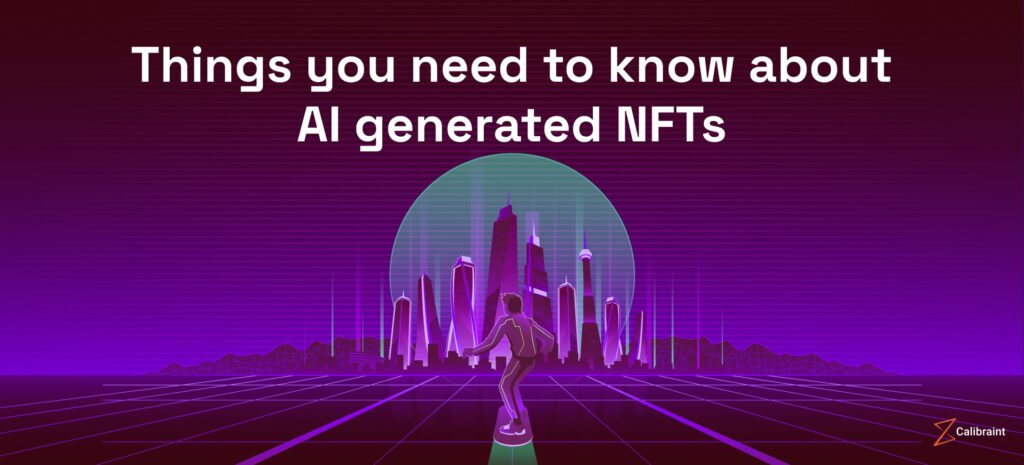November 16, 2023
Last updated: November 29, 2023


NFTs are digital assets that have a unique identity recorded in blockchain. NFTs can represent anything that is digital, such as art, music, videos, games, or even tweets, its use cases are endless. Unlike other digital files, which can be copied and shared endlessly, NFTs have a special feature: they are non-fungible making them one of a kind and cannot be replaced or exchanged for another. Nowadays AI generated NFT art is also gaining popularity so it will be adopted widely in the near future.
NFTs are popular because they create a new way of owning and trading digital content. By using blockchain technology, NFTs can prove the authenticity and ownership of digital assets, as well as their history and provenance. This can increase the value and scarcity of digital assets, as well as protect them from piracy or fraud.
NFTs are not just a trend or a fad; they are a revolution in the digital economy. They are changing the way we create, consume, and exchange digital content. They are opening up new possibilities and opportunities for artists, creators, and consumers alike. NFTs are here to stay and are yet to reach their peak.
How can AI help create unique and diverse NFT artworks?
AI can help create unique and diverse NFT artworks by expanding the possibilities and potential of digital art. AI enables artists to explore new ideas, styles, and formats that may not be feasible or accessible otherwise. AI generated NFT art can also enhance the creativity and originality of artists by providing them with inspiration, feedback, and collaboration. It can be a powerful tool for NFT art creation, as long as it is used ethically and responsibly.
- It can help generate new images from text or voice prompts. For example, an AI art generator can take a description like “a king spilling spaghetti on his Nike Air Jordans” and produce an image that matches the input. This can allow artists to express their ideas in a visual form without having to draw or paint them manually. Some examples of AI art generators are NightCafe, DALL-E, and Midjourney.
- It can transform existing images into different styles or genres. Consider this example, an AI art generator can take a photo and apply a style transfer algorithm to make it look like a painting by Monet, Van Gogh, or Picasso. This can allow artists to experiment with different aesthetics and techniques without having to learn them from scratch. Some of the AI art generators that use style transfer are Artbreeder, Chromie Squiggle, etc.
- AI platforms can combine multiple images or elements into a collage or composition which is also a great way to create art. Nowadays AI NFT generators can take several images and blend them together to create a new image that has a coherent theme or narrative. This can allow artists to create complex and rich artworks that showcase their vision and imagination.
The challenges and risks of AI-generated NFTs


AI generated NFT art is a new and exciting phenomenon in the digital art world, but it also poses some challenges and risks that need to be carefully examined and addressed. By doing so, they can become a positive and constructive force for art creation, consumption, and exchange. These are some of the questions that arise when dealing with AI-generated NFTs, as they relate to the aesthetic and economic aspects of art –
Ownership and authorship:
Who owns and who authored an AI generated NFT art? Is it the AI algorithm, the human who designed or trained the algorithm, the human who provided the input or prompt, or the human who purchased the NFT? This creates a loop of questions that need a proper answer.
How can the ownership and authorship of the AI generated NFT art be verified and proven? How can the rights and responsibilities of the owners and authors be defined and protected? These are some of the questions that arise when dealing with AI-generated NFTs, as they challenge the traditional notions of ownership, copyrights, and authorship in art.
Ethics and legality:
When it comes to ethics and legality involving AI generated NFT artworks there are so many questions around it. How ethical and legal is it to use them? Is it fair to use existing artworks or data to train or influence AI algorithms without the consent or compensation of the original creators? This is one of the most important questions as the platforms need to be trained regularly to ensure consistent performance.
Is it acceptable to use AI generated NFT art that might be offensive, NSFW, harmful, or misleading? How can the ethical and legal standards and guidelines for AI-generated NFTs be established and enforced? These are some of the questions that arise when dealing with AI-generated NFTs, as they involve moral and legal issues that need to be considered and addressed.
Quality and value:
Quality and value are definitely subjective in nature, so how can the quality and value of AI-generated NFTs be measured and evaluated? It will be very hard to verify its authenticity and uniqueness. Therefore, the trust and reputation of AI generated NFT art platforms will be hard to maintain.
Conclusion
The bright future of AI in NFT marketplaces will not be questionable as it will enable artists to create unique and scarce digital assets. They offer new opportunities and challenges for artists, creators, and consumers alike. AI can help create unique and diverse NFT artworks by expanding the possibilities and potential of digital art. AI generated NFT art platforms can generate, transform, and combine images in various ways, allowing artists to express their ideas and visions in a visual form.
